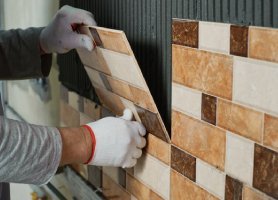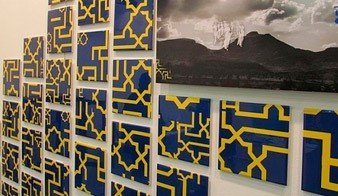Just like any other sector, the tiling industry is also under the shade of rapid modernization. From the intricate tile designs to tile manufacturing, there are various aspects of tiles where technology plays a pivotal role in the overall process. This post delves deeper into the tiling industry to find out how technology has been revolutionizing the way tiles are designed and manufactured by Indian tile manufacturers.
The last ten years have seen significant design developments for the category as a result of technical advancements, some of which were adapted from other sectors. For instance, new sizes, forms, textures, and thicknesses helped mold tile’s future in the house while also permanently altering its aesthetic potential. Tile is no longer limited to the kitchen and bathroom but has spread into new spaces both inside and outside thanks in large part to those technologies.

In order to raise the category to new heights, domestic and foreign manufacturers have benefited from such technologies by introducing new goods and product lines that emphasize innovation across the board.
These technologies have expanded the market and helped move the category ahead by providing so many new design alternatives. The versatility of indoor and outdoor usage, the enhanced technical characteristics that create grip finish options, and an unbeatable life expectancy along with the wide array of designs have spiked growth in both the residential and commercial market.

Digital Printing
Without a question, the adoption of sophisticated digital printing has had the most influence on the tile sector. During the past few years, digital printing has completely changed the business, enabling Indian tile exporters to make increasingly more complex goods that better suit consumer demands. They are reproducing natural materials with really high degrees of realism. The progress of printing technology has led to tile manufacturers in India being able to create unique patterns, motifs, and brilliant colors on individual tiles.
Transformation in The Ceramic Sector
When it comes to handling products and processing materials, ceramic production operations are highly automated. However, one of the most prevalent issues in the conventional ceramic industry is that the machinery and apparatus needed for each stage of production are not linked together, which reduces the equipment’s overall effectiveness (OEE). There is still more work to be done in terms of automating and improving the flow of data and information, notwithstanding the sector’s recent advances toward digitalization.
Benefits of Digital Transformation in The Tile Industry
Any industrial sector may benefit from digital transformation since it is interdisciplinary. Its goal in the ceramics industry is to transition to more effective, productive, and environmentally friendly processes, providing the following competitive advantages:
Reduce Costs – By eliminating wasteful spending, machine learning models and device connection simplify production processes.
Reduced Energy Consumption – New intelligent instruments determine the best production levels and provide the same outcomes with the least amount of energy.
Reduce Test Inefficiency – Digital and simulation models, which are effective and affordable product testing solutions, may speed up testing and take the place of time-consuming and expensive “Trial and Error” techniques.
Process and transition times may be cut in half thanks to work area automation and optimization, which also eliminates gaps in between stages.
Improved Product Quality: New methods make it possible to produce items with clever designs and novel ideas that appeal to tile importers and architects. Additionally, the accuracy and validity of the measurements of several factors guarantee the ultimate product’s quality.
Reduce Waste – Companies strive to lessen their pollution and environmental effect by conserving energy and using resources that would have otherwise been wasted.
The shapes and sizes of tiles that are being introduced to the market have also been influenced by new technologies, in addition to surface patterns. With the use of these technologies, tile manufacturers in India may produce everything from rectangular slabs of porcelain to large-format hexagonal mosaics.
